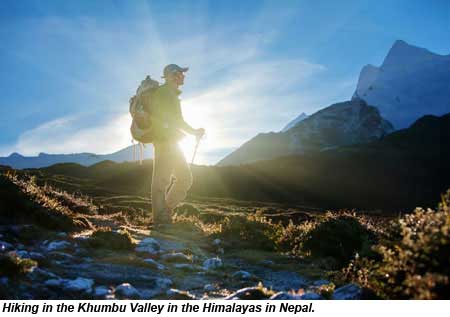 Anyone who is not in the adventure travel market might want to consider jumping into it head-first. A recently released study shows that adventure travel has been growing 65% year over year since 2009. It is now a $263 billion industry, and it’s still growing.
Anyone who is not in the adventure travel market might want to consider jumping into it head-first. A recently released study shows that adventure travel has been growing 65% year over year since 2009. It is now a $263 billion industry, and it’s still growing.
When it was released in August, the 2013 Adventure Tourism Market Study, a consumer-research report by George Washington University conducted in partnership with the Adventure Travel Trade Association (ATTA), indicated staggering growth in the adventure travel sector between 2009 and 2012 ? a rate of expansion that surprised even the study’s sponsor.
“We expected growth ? we expected big growth ? but not at that level,” said ATTA President Shannon Stowell.
Stowell said that several factors had contributed to the 65% year-over-year growth in the adventure travel market. For one, the number of adventure travel suppliers is growing very rapidly.
What’s more, the first study was conducted in 2009, when the entire travel industry, including the adventure travel market, was bottoming out due to the economic downturn.
“The other reality here is that adventure travel is mainstreaming,” Stowell said, noting that adventure travel experiences are increasingly being offered by the travel industry at large, whether it’s a hotel with a sea kayaking program or destinations that have begun marketing their adventure travel possibilities.
All told, the value of the outbound adventure travel market for the Americas and Europe (regions that make up nearly 70% of the world’s international tourism departures) is estimated to be $263 billion, the study revealed.
‘Adventure traveler’ defined
So, exactly who is this adventure traveler, who is spending countless dollars on his or her exploits around the world?
According to the study, 57% of adventure travelers are male, and 48% are single or have never been married (compared with 43% who are currently married). Adventure travelers also tend to skew younger, with an average age of 36.
Seventy-one percent of adventure travelers have a valid passport. A small percentage of them travel alone, 21% travel with friends, 37% with a spouse or partner and 30% with their family and kids.
On average, an adventure traveler’s per-trip spending (excluding airfare and gear) increased to $947 in 2012, up from $593 in 2009, a nearly 20% increase year over year.
Opportunities for agents
The study also suggested that there is untapped opportunity for the trade to embrace this market. According to the study, 69% of adventure travelers researched their last trip online, and 36% booked their air or hotel online. Only 25% visited a travel agent to research their trip, and only 17% booked their trip through a travel agent. (Click here?or on the image for a larger view of a chart showing the different ways adventure travelers prepared for their last trips.)
Recognizing that the adventure travel industry will likely continue to grow ? though probably not at the same unusually high rate ? the ATTA’s Stowell cautions those seeking to capitalize on the trend about the necessary training and specialization clients need to execute adventure travel safely and satisfactorily.
Consequently, the ATTA is turning up the dial on AdventureEDU, an ATTA training program backed by the United Nations World Travel Organization and dedicated to improving the adventure tourism sector.
“We’ve assembled a lot of best-of-breed trainers to offer everything from hard skills to soft skills,” Stowell said. She noted that the program is geared toward destination managers and tour operators who are looking to get into and learn more about the adventure travel market.
“Adventure travel shouldn’t be taken lightly,” Stowell said.

